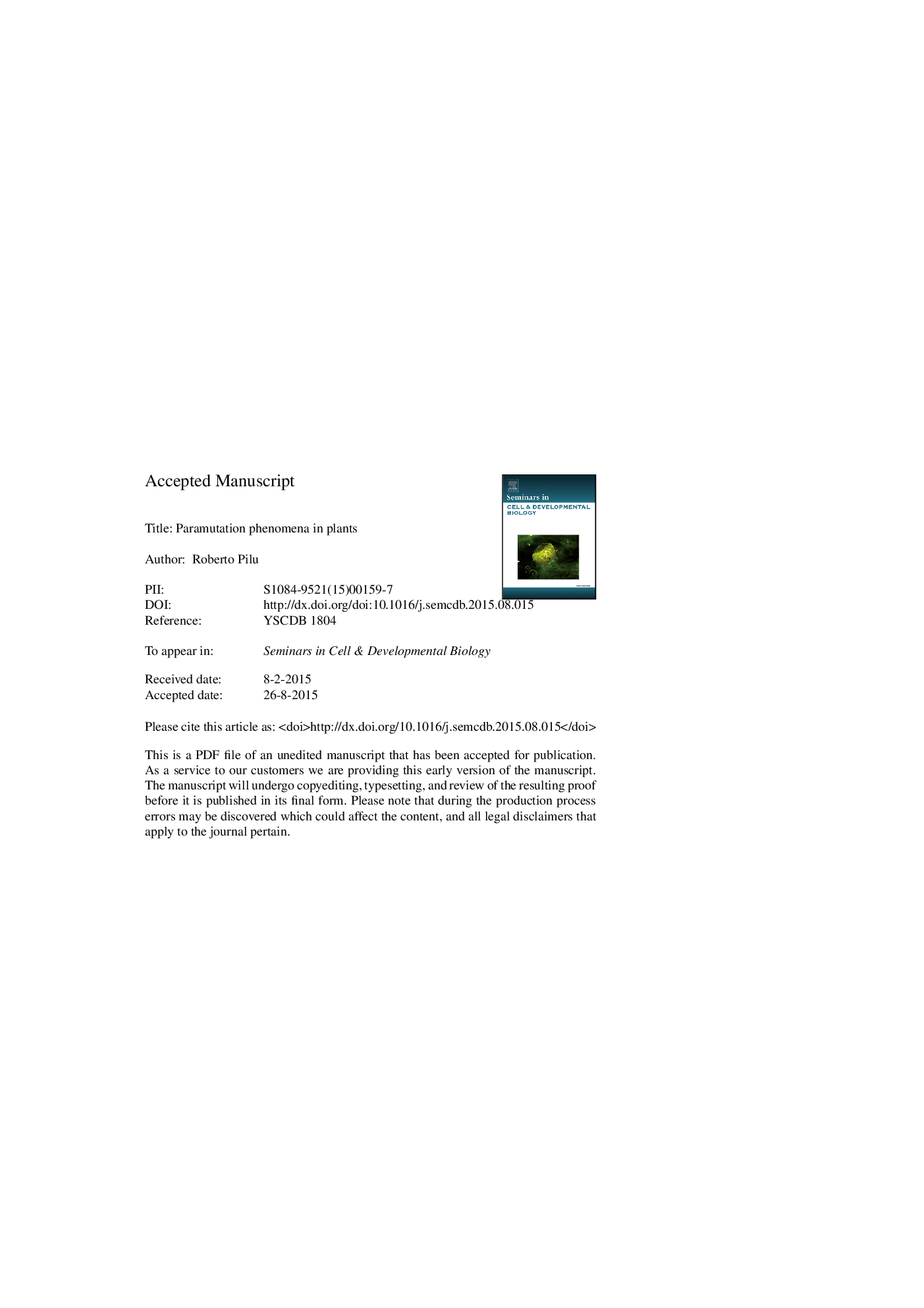| کد مقاله | کد نشریه | سال انتشار | مقاله انگلیسی | نسخه تمام متن |
|---|---|---|---|---|
| 8480319 | 1551378 | 2015 | 31 صفحه PDF | دانلود رایگان |
عنوان انگلیسی مقاله ISI
Paramutation phenomena in plants
ترجمه فارسی عنوان
پدیدار شدن پارامونت در گیاهان
دانلود مقاله + سفارش ترجمه
دانلود مقاله ISI انگلیسی
رایگان برای ایرانیان
موضوعات مرتبط
علوم زیستی و بیوفناوری
بیوشیمی، ژنتیک و زیست شناسی مولکولی
بیولوژی سلول
چکیده انگلیسی
Paramutation is a particular epigenetic phenomenon discovered in Zea mays by Alexander Brink in the 1950s, and then also found in other plants and animals. Brink coined the term paramutation (from the Greek syllable “para” meaning beside, near, beyond, aside) in 1958, with the aim to differentiate paramutation from mutation. The peculiarity of paramutation with respect to other gene silencing phenomena consists in the ability of the silenced allele (named paramutagenic) to silence the other allele (paramutable) present in trans. The newly silenced (paramutated) allele remains stable in the next generations even after segregation from the paramutagenic allele and acquires paramutagenic ability itself. The inheritance behaviour of these epialleles permits a fast diffusion of a particular gene expression level/phenotype in a population even in the absence of other evolutionary influences, thus breaking the Hardy-Weinberg law. As with other gene silencing phenomena such as quelling in the fungus Neurospora crassa, transvection in Drosophila, co-suppression and virus-induced gene silencing (VIGS) described in transgenic plants and RNA interference (RNAi) in the nematode Caenorhabditis elegans, paramutation occurs without changes in the DNA sequence. So far the molecular basis of paramutation remains not fully understood, although many studies point to the involvement of RNA causing changes in DNA methylation and chromatin structure of the silenced genes. In this review I summarize all paramutation phenomena described in plants, focusing on the similarities and differences between them.
ناشر
Database: Elsevier - ScienceDirect (ساینس دایرکت)
Journal: Seminars in Cell & Developmental Biology - Volume 44, August 2015, Pages 2-10
Journal: Seminars in Cell & Developmental Biology - Volume 44, August 2015, Pages 2-10
نویسندگان
Roberto Pilu,
